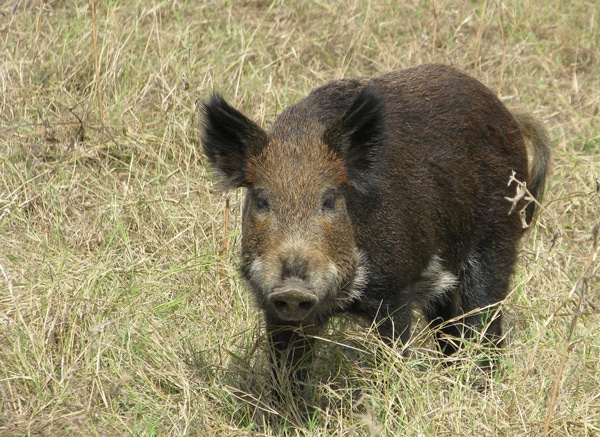
With the onset of summer, animal health officials are warning Southwest farmers and ranchers to take steps now to help manage feral swine populations on their property in an effort to reduce the risk of spreading diseases among domestic animals.
Dr. Lisa J. Becton, director of swine health for the National Pork Board, warns that the increase in sheer numbers of feral swine is good reason to develop a plan to control populations on the farm.
“We’re seeing a 20-percent annual increase in feral hog populations and with that the risk of spreading diseases like pseudorabies and brucellosis is greatly increased, and if we were to see the introduction of swine flu or foot-and-mouth disease, the problem could elevate quickly to a serious threat to animal and human health,” Becton warned.
She says the spread of disease not only threatens domestic animals, but also could affect trade status with other countries.
In Texas alone the feral hog population is estimated to exceed 2.5 million, but the numbers are increasing dramatically in at least 30 other states. Becton says rough estimates put the total feral hog population in the U.S. at nearly five million—and growing.
“This is not something new. Agriculture has been dealing with the problem of feral hogs for some time. But the population growth rate is sounding the alarm that the problem isn’t going away on its own. Managing these feral animals is not an easy task, but taking steps now will help delay an animal health crisis and provide more time to prepare for the risks,” she said.
Farmers, ranchers and federal and state agencies have all been active in developing an effective strategy to reduce the problem in recent years. But trapping the wild hogs is difficult, time consuming and costly and has been only minimally effective. Wildlife officials in Texas have instituted an open hunting season on feral swine with no bag limit, but this too has provided limited control.
“These animals move around a lot in search of food and water. They gravitate to a watering hole or root up a field and they are off to the next farm. It becomes important to report sightings of feral populations as quickly as possible so that action can be taken before they move away,” Becton said.
She says of most concern is the spread of pseudorabies, a viral disease of the central nervous system that can affect domestic and feral hogs as well as other livestock and wildlife. For domestic hog producers, the disease can weaken pigs and cause abortions and stillbirths, decreasing production and profits. Once infected, the hog is a lifetime carrier and will periodically shed the virus and contaminate other animals.
Other threats caused by feral hogs
Also of major concern is the spread of Brucellosis suis, a disease in swine that can cause infertility in boars and abortions in sows. But feral hogs can also carry Brucellosis abortus, the beef cattle form of the virus, a serious threat to cattle operations. Other disease concerns include porcine reproductive and respiratory syndrome, trichinosis and influenza.
Another major concern is contamination of water sources and serious crop damage attributed to feral hog populations. Texas Animal Health Commission officials say numerous cases of E. coli pathogens in water sources can be directly attributed to feral hog contamination, and Texas Department of Agriculture officials warn crop damage is on the rise as a result of rooting in fields.
Animal health officials are advising farmers and ranchers to take steps to help control feral hogs. Establishing barriers and quality fences around domestic swine may help in keeping them segregated from wild hogs. Since wild hogs are attracted to any food source, cleaning up food around bins is another step farmers and ranchers should take, and as well as to secure feed storage areas to prevent easy access. But Bectin says the first step in effective prevention is to be diligent in spotting the signs of feral hogs on your property and reporting them to local wildlife officials who may offer help.
TDA officials say nearly 25,000 feral hogs were destroyed last year in Texas, but the population is growing at such an elevated rate that more must be done to avoid the potential of a serious health risk to both domestic animals and humans.
For additional resources, visit www.feralhogs.tamu.edu.
About the Author(s)
You May Also Like






